physics - electricity & circuits (10.1 - 10.42)
1/80
There's no tags or description
Looks like no tags are added yet.
Name | Mastery | Learn | Test | Matching | Spaced |
|---|
No study sessions yet.
81 Terms
10.1 atom structure - position, mass, charge of protons, neutrons, electrons
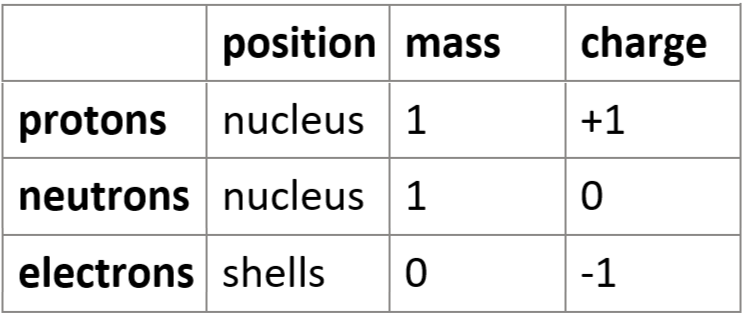
10.2 + & - terminals symbol

10.2 cell symbol & definition
provides circuit with source of potential difference

10.2 battery symbol & definition
provides circuit with source of potential difference
two/more cells

10.2 open switch symbol & definition
circuit off

10.2 closed switch symbol & definition
circuit on

10.2 voltmeter symbol & definition
measures voltage
connected in parallel

10.2 ammeter symbol & definition
measures current
connected in series

10.2 resistor symbol & definition
limits flow of electrical current
can’t change resistance

10.2 variable resistor symbol & definition
limits flow of electrical current
can change resistance

10.2 lamp symbol

10.2 motor symbol & definition
converts electrical energy to mechanical energy
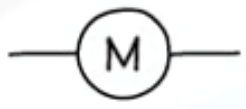
10.2 diode symbol & definition
only lets current flow in one direction
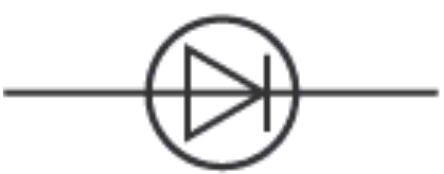
10.2 thermistor symbol & definition
resistance depends on temperature

10.2 LDR (light-dependent resistor) symbol & definition
resistance depends on light-intensity
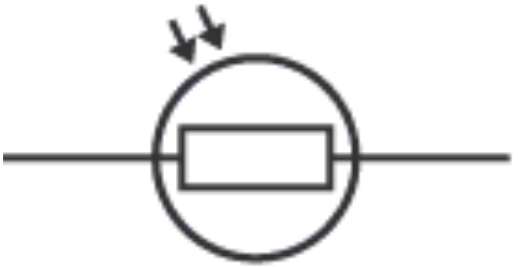
10.2 LED (light-emitting diode) symbol & definition
only lets current flow in one direction
emits light as result of current flow

10.3 series circuits
one route current can take around circuit
diagram: lamps cannot be switched on & off individually; one lamp fails = all lamps switch off

10.3 parallel circuits
junctions that let current take diff. routes around circuit
diagram: lamps can be switched on & off individually; one lamp fails = not all lamps fail
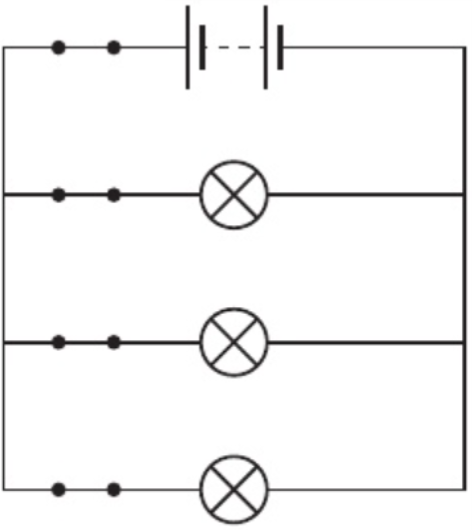
10.4 voltmeter - connected in, measures
connected in parallel with component
measures potential difference (voltage) across component - in volts
10.5 potential difference (voltage) equal to
energy transferred per unit charge
1 V = 1 J/c
10.6 energy transferred equation
energy transferred (J) = charge moved (C) x potential difference (V)
E = QV
10.7 ammeter - connected in, measures
connected in series with component
measures current in component - in amps
10.8 electric current definition
rate of flow of charge
10.8 current in metals
flow of electrons
10.9 charge equation
charge (C) = current (A) x time (s)
Q = It
10.10 what will there be when closed circuit includes source of potential difference?
current in circuit
10.11 what happens to current at junction in circuit?
current is conserved (current entering junction = current leaving junction)
10.12 changing resistance in circuit effect on current
resistance increased = current decreased
V = IR
e.g. 10 = I x 2 → I = 5, resistance increased from 2 → 5, 10 = I x 5 → I = 2 - current decreased from 5 → 2
10.12 how to change resistance in circuit?
use variable resistor
10.13 potential difference equation
potential difference (V) = current (A) x resistance (Ω)
10.14 two resistors in series effect on net resistance & why
total resistance increases
pathway harder for current to flow through
10.14 two resistors in parallel effect on net resistance & why
total resistance decreases
more paths for current to flow through
10.15 calculate current in series circuit
V = IR → I = V/R
IT = I1 = I2 = I3
10.15 calculate potential difference in series circuit
V = IR
Vtotal = V1 + V2 + V3
10.15 calculate resistance in series circuit
V = IR → R = V/I
Rtotal = R1 + R2 + R3
10.16 design & construction of series circuits for testing & measuring
variable resistor changes current in circuit
measurements of current & p.d. recorded
resistance of fixed resistor calculated - checks if resistor has correct value/measures unknown resistance
10.17 core practical: construct electrical circuits to investigate relationship between potential difference, current & resistance for resistor & filament lamp
set up circuit in diagram, use power pack that can provide diff. p.d.s
set power pack to lowest voltage & switch on
record ammeter & voltmeter readings
switch power pack off
repeat steps 2-4 up to max. of 6V
replace resistor in circuit with 2 filament lamps & repeat steps 2-5
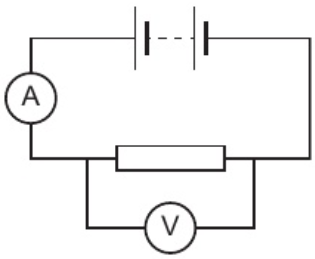
10.17 core practical: construct electrical circuits to test series & parallel circuits using resistors & filament lamps
set up 1st circuit in diagram
set power pack to lowest voltage & switch on
record ammeter & voltmeter readings
repeat steps 2-3 up to max. of 6V
set up 2nd circuit in diagram
repeat steps 2-4 for several diff. voltage settings

10.18 filament lamps - current, potential difference, resistance
current makes filament heat up
greater p.d. = more current flows = filament gets hotter
filament gets hotter = resistance increases
p.d. changes → current doesn’t change by same % - not in direct proportion

10.18 diodes - current, potential difference, resistance
p.d. in one direction = low resistance
p.d. in opposite direction = high resistance
current only flows in one direction
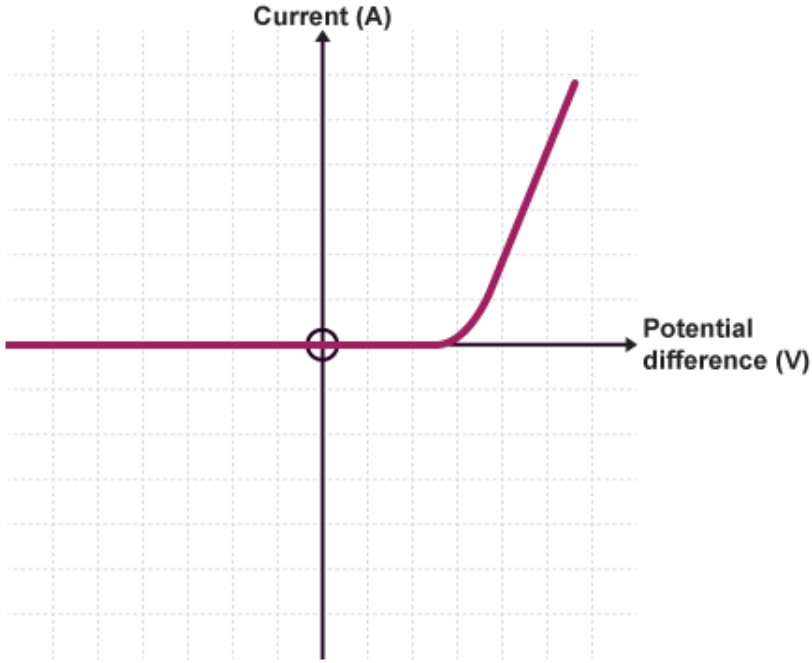
10.18 fixed resistors - current, potential difference, resistance
p.d. changes → current changes by same % - in direct proportion
resistance stays same
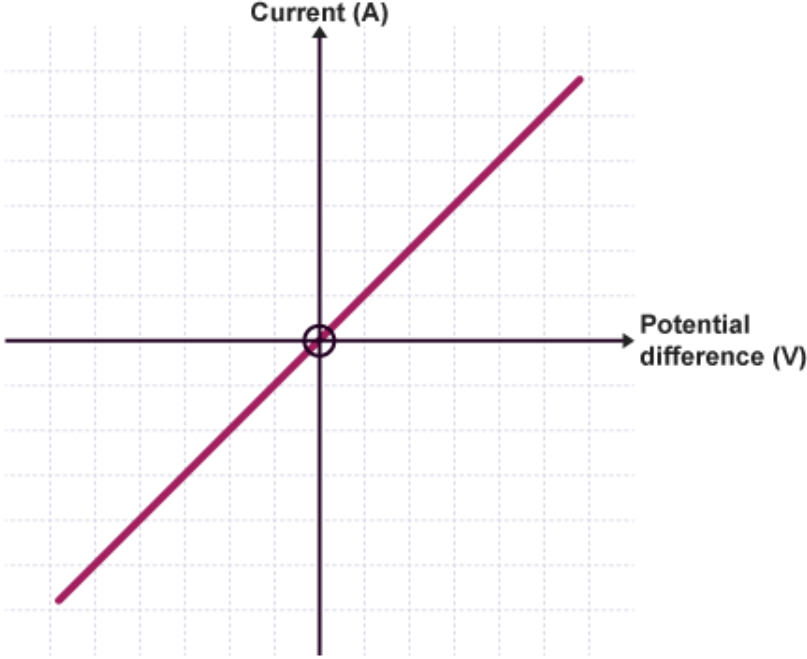
10.19 light intensity effect on resistance of LDR
light increases = resistance decreases
light decreases = resistance increases
10.20 temp. effect on resistance of thermistor
temp. increases = resistance decreases
temp. decreases = resistance increases
10.21 filament lamps, diodes, thermistors, LDRs - design & use of circuits to explore variation of resistance
explores how resistance of lamp changes as p.d. across lamp is changed
current through lamp measured by ammeter & recorded for diff. values of p.d. measured on voltmeter
(same for diodes, thermistors & LDRs just with diff. symbol)
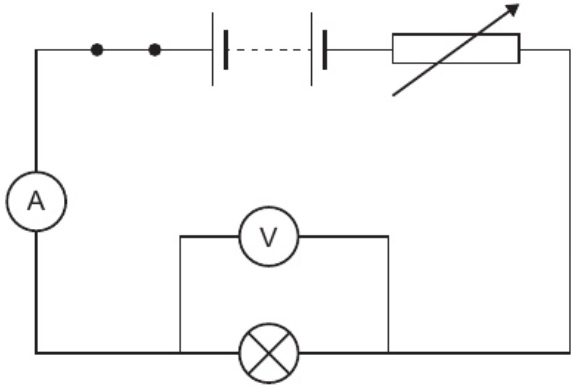
10.22 what happens when there is electric current in resistor?
there is an energy transfer - heats resistor
10.23 what happens when electrical current does work against electrical resistance?
current passes through resistor - energy transferred because electrical work done against resistance
electrical energy dissipated as thermal energy in surroundings
10.24 why is energy transferred when there is electrical current in resistor?
electrons flow through lattice of vibrating ions
electrons collide with ions - transfer energy to ions
electrons make more collisions with ions = harder for electrons to pass through = higher electrical resistance
10.25 reducing unwanted energy transfer - low resistance wires
reduce resistance in circuits:
use wires made from metals with low resistance
use thicker wires - have lower resistance
cool metals - lattice ions not vibrating as much
lower resistance = less energy transferred by heating = less energy dissipated
10.26 advantages of heating effect of electric current
energy transferred from circuit by heating
surroundings gain thermal energy
useful in electric heater/kettle - purpose is to heat surroundings
10.26 disadvantages of heating effect of electric current
useful energy transferred from circuit by heating
surroundings gain thermal energy
not useful in computers/plugs/wires - purpose is not to heat surroundings
10.27 energy transferred equation
energy transferred (J) = current (A) x time (s) x p.d. (V)
E = ItV
10.28 power definition
energy transferred per second
10.28 power units
watts (W)
10.29 power equation
power (W) = energy transferred (J)/time taken (s)
P = E/t
10.30 how is power transfer in any circuit device related to p.d. across it & current in it?
power transfer in component/appliance proportional to p.d. across it & current in it
energy transferred = current x time x p.d.
power = energy transferred/time
power = current x time x p.d./time = current x p.d.
10.31 electrical power equation - current & p.d.
electrical power (W) = current (A) x p.d. (V)
P = IV
10.31 electrical power equation - current & resistance
electrical power (W) current2 (A2) x resistance (Ω)
P = I2R
10.32 how is energy transferred from batteries → energy of motors in fan?
some energy stored in battery —transferred by electricity→
motor —transferred→
store of kinetic energy in fan
some energy —transferred by heating→
wires, motor & surroundings
all energy dissipated by heating - increases store of thermal energy of surroundings
10.32 how is energy transferred from batteries → energy of heating devices in heating gloves?
gloves contain wire of high resistance
energy stored in battery —transferred by electricity→
high resistance wire —transferred by heating→
store of thermal energy in wire —transferred by heating→
gloves & hands of wearer & then surroundings
10.32 how is energy transferred from a.c. mains → energy of motors washing machine?
motor in washing machine —transfers energy→
kinetic energy in washing machine drum
10.33 direct voltage
cells & batteries have a positive & a negative terminal
direction of movement of charge (current) stays same
voltage stays same
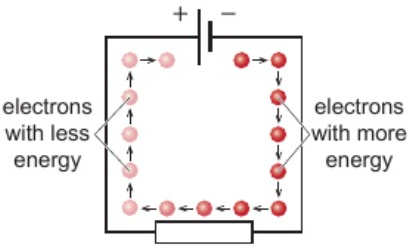
10.33 alternating voltage
direction of movement of charge (current) changes
voltage changes - increases to peak voltage, decreases to 0
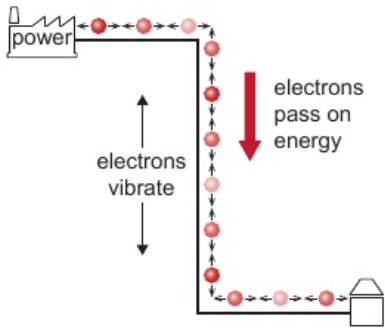
10.34 direct current (d.c.) definition
movement of charge in one direction only
10.34 what current do cells & batteries supply?
direct current (d.c.)
10.35 alternating current (a.c.) definition
in a.c. movement of charge changes direction
10.36 UK domestic supply - kind of current
alternating current (a.c.)
10.36 UK domestic supply - frequency
50Hz
10.36 UK domestic supply - voltage
about 230V
10.37 live mains input wire function
connects appliance to generators at power station
10.37 neutral mains input wire function
return path to power station
10.38 earth wire function
fault in appliance - metal parts at high voltage
touch wire = electric shock - current flows through you to ground
connects metal parts of appliance to large metal spike/ tubing in ground
current flows to ground through earth wire not you
for safety
10.38 fuses function
tube with thin wire inside
marked with current it can carry
for safety
fuse melts before wiring/parts of appliance can overheat
current passes through wire
wire gets hotter
current exceeds certain value
wire melts
breaks circuit - cuts off mains electricity supply
stops current
fuses disadvantages
must be replaced
take time to melt - don’t prevent electric shock
10.38 circuit breakers function
detect change in current
switch off current supply
for safety
circuit breakers advantages
once fault fixed, circuit breakers can be switched on again
can prevent electric shock
10.39 why should switches & fuses be connected in live wire of domestic circuit?
when off, no current goes through appliance
10.40 live wire p.d.
230V
10.40 neutral wire p.d.
0V
10.40 earth wire p.d.
0V
10.41 dangers of connection between live wire & earth
if fault makes live wire touch metal part, makes very low resistance circuit between 230V & 0V
makes very large current flow to earth - heats up wire, could cause fire
10.42 relationship between power ratings for domestic electrical appliances & changes in stored energy when in use
e.g. kettle with power rating 3kW:
transfers 3000 joules of energy each second
transfers from mains electricity supply → store of thermal energy in water